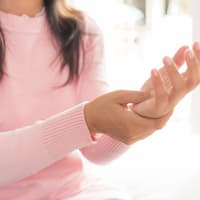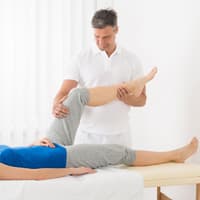
Snap finger untreated: What can happen?
The doctor also refers to snap finger as annular ligament stenosis. It can be diagnosed clinically. Typically, the snapping finger, usually the thumb or middle finger, is affected. However, other fingers or even several fingers can also be affected. If left untreated, those affected suffer from pain in the ring ligament area, which is particularly noticeable in the morning.The tendons can suffer long-term damage if they are constantly rubbing and snagging under the ring ligament. For some people the problem disappears on its own, others require treatment.
Snap finger treatment
The first step is to try to counteract the snap finger with physiotherapy. Physiotherapy with targeted exercises stretches the joint capsule and relaxes the musculoskeletal system. This should quickly reduce the pain. If there is no improvement after a week of physiotherapy, anti-inflammatory medication can reduce swelling in the tendon and restore mobility. Tablets are used for this or the orthopaedist injects cortisone directly into the affected annular ligament. The finger must then be rested for some time. Surgery should only be considered if snap finger syndrome has remained untreated for a long time and the inflammation is already very advanced. During the procedure, the surgeon cuts the constricting ring ligament, allowing the flexor tendon to move and stretch freely again. As several annular ligaments surround and stabilize the tendon, the severed ligament can be dispensed with.
Snapping finger: tendovaginitis stenosans - these are the causes
The cause of snapping finger (tendovaginitis stenosans = constricting tendon sheath inflammation) is usually excessive, prolonged and monotonous strain on the fingers, for example through manual work or gardening. This leads to thickening and swelling. The inflamed tendon sheath can also be caused by diabetes mellitus, signs of wear and tear with increasing age or genetic predisposition. The flexor tendon, which is responsible for the mobility of the finger, becomes inflamed, swells, no longer glides smoothly through the surrounding annular ligaments and gets stuck in them. Due to the thickening, the tendon then remains in a bent position when gripping and the finger no longer straightens on its own.
Tendonitis or a chronically thickened tendon can therefore have various causes. Summarized here once again:
- Overloading due to one-sided movement sequences
- incorrect postures/positions
- rheumatoid arthritis
- Metabolic disorders (e.g. diabetes mellitus or gout)
- carpal tunnel syndrome
- genetic predisposition
- wear and tear, age-related
A snap finger is therefore an inflammation of the tendon sheath in the area of the flexor tendon of the hand. Incidentally, women are more frequently affected by snap finger or inflammation of the tendon sheath than men, and diabetics are also ten percent more likely to develop snap finger. Overall, around 2.6 percent of the German population show symptoms of snap finger.
Signs of a snap finger
The first warning signs are pain in the palm of the hand and a pulling sensation on the outside and inside of the finger. At the latest when finger pain occurs when bending, you should take preventative measures and give your fingers a rest: Spread all fingers wide every now and then, bend them backwards and massage the palms with the thumb of the opposite hand. Roll the sides of the affected finger vigorously with the thumb and index finger of the opposite hand. It is also important to avoid repetitive gripping movements or at least to interrupt them more frequently. Quick measures against acute pain are cool compresses and massaging the hand. If the pain does not improve despite relief and massages, a doctor should be consulted.
You may also be interested in this:
Lumbalgia: What to do with lower back pain?
Fructose intolerance: causes and what you should look out for
Urinary urgency at night: what's behind it
Carpal tunnel syndrome: when surgery makes sense
Preventing osteoarthritis: how to keep your joints fit into old age
Protection for the joints: When the body is over-acidified






